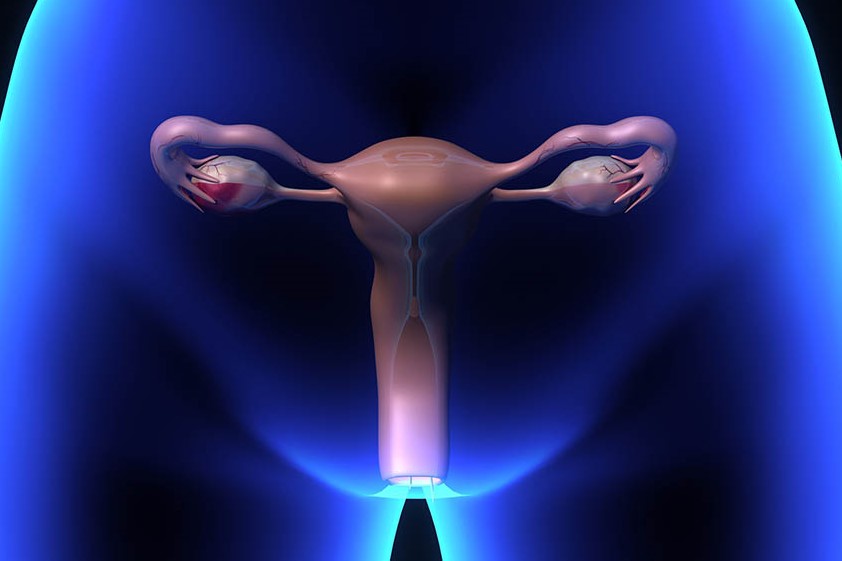
What are gynaecological tumours?
Gynaecological tumours are neoplasms that affect women and mainly affect the uterus (endometrium and cervix) and ovaries
Cancer of the cervix – the lower part of the uterus – is widespread and is the leading cause of death from gynaecological cancer worldwide.
The most frequent cancer of the uterus is endometrial cancer, which is especially common in the postmenopausal period.
Ovarian cancer can be malignant or benign and involves those small organs, located to the right and left of the uterus, which are responsible for the production of female sex hormones and oocytes.
What are the causes of gynaecological tumours?
Cervical cancer is caused by the uncontrolled multiplication of certain cells that turn into malignant cells.
Papilloma Virus (HPV) infection is an important risk factor.
This virus, together with other infections of the genital tract, are the main causes of cervical cancer.
The causes of endometrial cancer are not yet fully known, among the predisposing factors being oestrogen dominance (high oestrogen levels without or with low progesterone levels); a common condition e.g. in cases of obesity, diabetes, late menopause.
On the other hand, ovarian cancer has a strong family history; other risk factors are infertility, hormonal treatment for infertility, ovarian polycystosis and endometriosis, and obesity.
What are the symptoms of gynaecological tumours?
Cervical cancer is often – especially in the early stages – asymptomatic.
Symptoms are non-specific: vaginal bleeding (outside the cycle), unusual vaginal discharge, pain in the pelvis and during sexual intercourse.
Abnormal vaginal bleeding (outside the cycle or during menopause) is also a typical symptom of endometrial cancer.
Ovarian cancer also has no specific symptoms, easily confused with digestive disorders or abdominal pain of another nature.
How to prevent gynaecological cancers?
Protecting oneself against HPV infection and other infections of the genital tract can help prevent cervical cancer, although the use of condoms does not completely rule out transmission of the virus.
Read Also:
Emergency Live Even More…Live: Download The New Free App Of Your Newspaper For IOS And Android
Inflammations Of The Genital Apparatus: Vaginitis
Cervical Dysplasia: What Are The Risk Factors And How To Treat It
Vulvodynia: What Are The Symptoms And How To Treat It
What Is Vulvodynia? Symptoms, Diagnosis And Treatment: Talk To The Expert
Accumulation Of Fluid In The Peritoneal Cavity: Possible Causes And Symptoms Of Ascites
What’s Causing Your Abdominal Pain And How To Treat It
Pelvic Varicocele: What It Is And How To Recognise The Symptoms
Can Endometriosis Cause Infertility?
Transvaginal Ultrasound: How It Works And Why It Is Important
Candida Albicans And Other Forms Of Vaginitis: Symptoms, Causes And Treatment
What Is Vulvovaginitis? Symptoms, Diagnosis And Treatment
Vulvodynia: Causes, Symptoms And Treatment
Malignant Tumours Of The Oral Cavity: An Overview
Neuroendocrine Tumours: An Overview
Benign Tumours Of The Liver: We Discover Angioma, Focal Nodular Hyperplasia, Adenoma And Cysts
Tumours Of The Colon And Rectum: We Discover Colorectal Cancer
Tumours Of The Adrenal Gland: When The Oncological Component Joins The Endocrine Component
Brain Tumours: Symptoms, Classification, Diagnosis And Treatment
What Is Percutaneous Thermoablation Of Tumours And How Does It Work?
Colorectal Resection: In Which Cases The Removal Of A Colon Tract Is Necessary
Thyroid Cancers: Types, Symptoms, Diagnosis
Tumours Of Endothelial Tissues: Kaposi’s Sarcoma
Gastrointestinal Stromal Tumor (GIST)
Juvenile Gastrointestinal Polyposis: Causes, Symptoms, Diagnosis, Therapy
Diseases Of The Digestive System: Gastrointestinal Stromal Tumours (GISTs)


